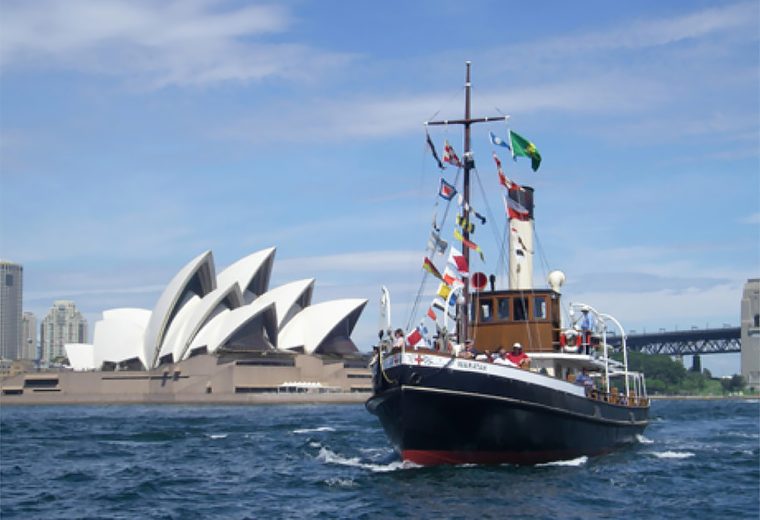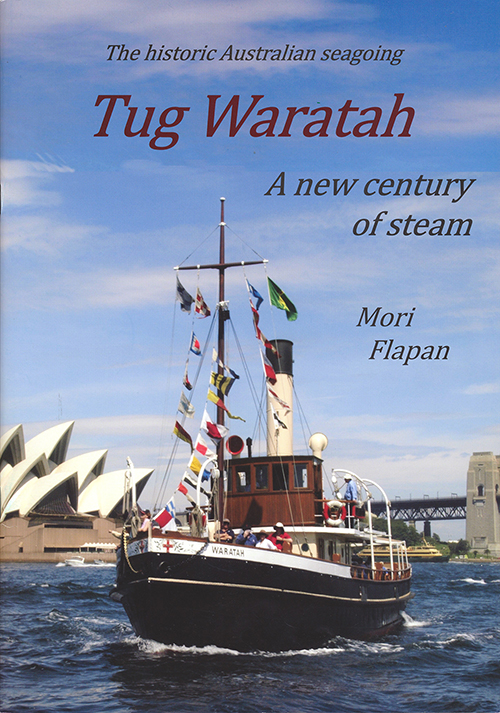Book Review: The Australian seagoing tug Waratah – a new century of steam


 By Mori Flapan
By Mori Flapan
Available from Sydney Heritage Fleet Online Store $19.95
Reviewed by Randi Svensen*
As someone who spent nearly a decade researching and writing the history of Australia’s tugboats, I have Mori Flapan to thank for making my own book possible. His website www.boatregister.net is a resource that he very generously shares with researchers and writers who also have his passion for maritime history and old boats. Less known, however, is that Mori is an author in his own right.
With this updated version of his own 2002 book, Flapan’s skill and attention to detail are there to delight and educate a new audience, with its stories and many images of all sorts of tugs.
But mostly it’s the story of one very special tug … the steam tug Waratah.
Involved with the Sydney Heritage Fleet since the age of 15, Mori Flapan joined the team restoring Waratah while he was later studying naval architecture. He first wrote the history of this wonderful vessel (originally named Burunda) in 2002 and has now updated the 40-page book to include extra information and images that have become available since the spread of the internet. The old black and white images that appear throughout Waratah’s story have been painstakingly sourced for maximum effect, and many of the colour images illustrate the process of Waratah’s restoration. Meanwhile, the text explains the complex process. There are also very helpful descriptions of some of the techniques used in the restoration and a great explanation of just how a marine steam engine works (not as easy to understand as you’d think!), including a diagram so clear that even a mechanical simpleton like me can understand.
The book begins with the early days of steam navigation in Australia. While contemporary newspaper accounts from 19 May 1831 confirm that the first boat to ‘steam’ on Sydney Harbour was the locally-built Surprise, Flapan points out that the much larger Sophia Jane, built in the United Kingdom and sailed to Sydney (with its machinery stowed), performed the very first steam-powered tow in Sydney on 11 June, after her mechanics had been installed following arrival. An image shows the complexity of Sophia Jane’s design, at a time when boatbuilders were trying to adapt from sail to a totally new technology. Ultimately, having both sail and mechanical propulsion wasn’t unlike today’s hybrid vehicles, albeit somewhat more cumbersome.
Fast-forward 70 years and Burunda (said to mean ‘swan’ in the local Indigenous language) was built by the NSW Government at Cockatoo Island on Sydney Harbour. By 1917, her name had been changed to Waratah, after a suburb of Newcastle, when she went to work on Newcastle Harbour. An excellent list of Waratah’s specifications is included for the technically savvy. Many other tugs are described in the book, giving the reader a broader picture of these amazing vessels and their place in Australia’s development. Without tugs, the ‘supply chain’ so often mentioned in today’s COVID-19 times, would simply not exist.
From the early paddle-wheelers to the new 5,000 horsepower tugs, all tugboats are mesmerizing. But I have to admit that my personal favourites are the coal-fired, screw-propelled steam vessels, like the Sydney Heritage Fleet’s Waratah. Waratah is maintained by the dedicated volunteer team at the Sydney Heritage Fleet and now again takes groups out so everyone can experience the wonder and power of the vessels that literally created Australia’s supply chain and trade, by making sailing ships independent of the wind and currents that often delayed arrival and departure. What will definitely surprise you is how quiet Waratah’s engine is. Perhaps closer to the sound of an electric vehicle than a motor car. Perhaps we’ve gone full-circle?
Mori’s generosity has no end. Author proceeds from sale of the book are donated to the Sydney Heritage Fleet. You can contact them on sales@shf.org.au or through the fleet’s online bookshop at www.sydneyheritagefleetshop.com.
*Randi Svensen, Author of:
- Wooden Boats, Iron Men – the Halvorsen Story (Halstead Press and the Australian National Maritime Museum, 2004)
- Heroic, Forceful & Fearless: Australia’s tugboat heritage (Citrus Press and the Australian National Maritime Museum, 2011)
- Nuts and Bolts and Petticoats: how the Nock and McCathie families shaped retailing in Australia (Halstead Press, 2020)
- A Changing Tide: the history of Berrys Bay, Sydney Harbour, 33.83S, 151.18E (Citrus Press, 2021)

